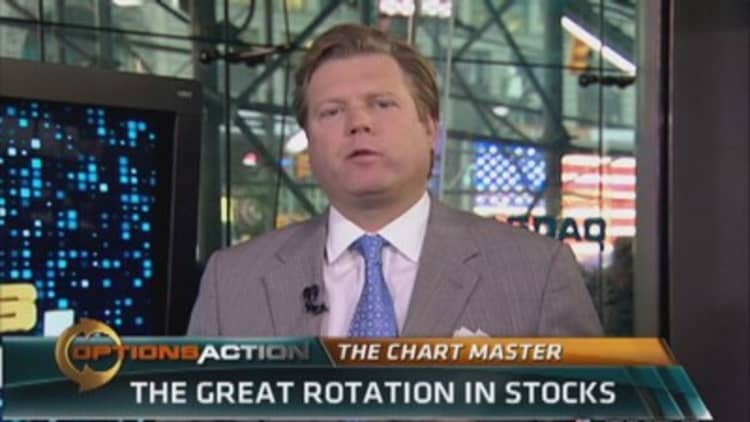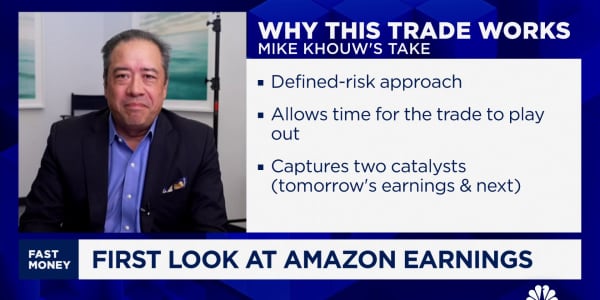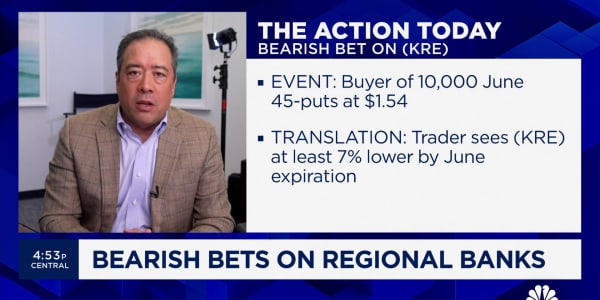
Consumer staples stocks are considered to be defensive, but that sector has outperformed the as a whole this year, rising nearly 4 percent to the S&P's 2 percent.
To Carter Worth, chief market technician at Sterne Agee, that trend is dangerously unsustainable.
"In principle, this kind of behavior is a fear-based approach to markets," one that occurs "when people don't like what they see, but have to be long—big pension plans and so forth—and they do so defensively. But usually it comes to an end," Worth said Friday on CNBC's "Options Action."
Comparing the consumer staples sector to the S&P 500, Worth noteed the defensive group's "epic period of outperformance."
"By that score alone, you have to wonder what's really left in the trade," Worth said.
Furnishing a 25-year chart of the sector, Worth pointed out that "the strength of the last six or eight months has taken us well above these well-defined lows and highs of the channel. And ... mean reversion is a powerful principle. To overshoot this, by all accounts, implies that there will be some revisiting of the top of the channel, which is about a 10-percent move lower from here."
Read More Stocks rise, lifting S&P 500 above record close, Dow rallies triple digits
To make his thesis actionable, Worth moved on to a chart of the SPDR consumer staples ETF (XLP).
"You can see again how well-defined the channel is," Worth said. "It responds beautifully over and over and over, and when you overshoot the top, you have the tendency to mean-revert. And we're looking for a 10-percent decline back to, or a little bit below, the middle of the range."
But if the outperformance looks overextended on the chart, perhaps it looks even more overextended on a fundamental basis. Looking at six names in the sector—Kraft, General Mills, Procter & Gamble, Campbell Soup, Coca-Cola and Costco—Worth notes that their average price-to-earnings ratio is 21.5, but their earnings growth over the last year is an average of 0 percent.
That tells Worth that people are buying shares of these companies not because the businesses are in good shape but because they feel compelled to buy something and would prefer to purchase stocks that are on the defensive side.
"This is a fear-based kind of a behavior, and it comes to an end more often than not," Worth said.
Read MoreProof that 2014 is the year of the stock picker
"I just don't know how anybody would want to potentially chase this trade," agreed Michael Khouw of Dash Financial. " Where do you think these things are honestly going to go?"
So to make a bearish bet on the Consumer Staples ETF, Khouw recommends buying the September 44-strike put for $1.15. This trade will make money as long as the ETF is below $42.85 at September expiration.






